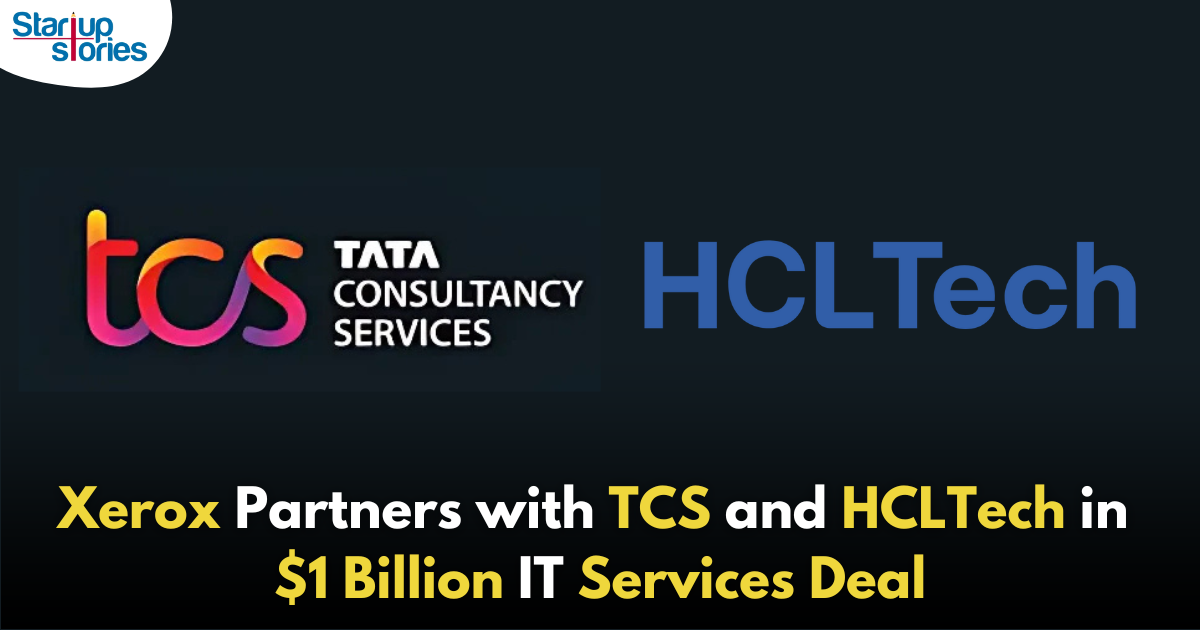Xerox has announced a significant commitment of over $1 billion in IT services to Tata Consultancy Services (TCS) and HCLTech as part of a strategic partnership that will extend over the next 5 to 7 years. This announcement was made in a recent regulatory filing with the US Securities and Exchange Commission, detailing the financial scope and objectives of the agreements.
Breakdown of the Agreements
The partnership includes a $590 million contract with HCLTech for a five-year term and a $490 million deal with TCS over seven years. This collaboration is part of Xerox’s broader strategy to modernize its IT infrastructure and enhance operational efficiencies as it pivots towards digital services. Both TCS and HCLTech have previously indicated their commitment to expanding their partnerships with Xerox, which is headquartered in Connecticut.
In addition to these contracts, Xerox has also disclosed a $125 million commitment with Microsoft and a $50 million deal with SAP, each spanning seven years. The partnership with Microsoft focuses on leveraging Azure cloud services, while SAP will provide a cloud-based digital ERP platform aimed at streamlining operations.
Strategic Transformation Initiatives
The agreements come at a crucial time for Xerox as it embarks on a comprehensive transformation initiative. TCS is set to support Xerox in overhauling its IT infrastructure, migrating legacy systems to the cloud, and integrating generative artificial intelligence (AI) into its operations. Tino Lancellotti, Chief Information Officer at Xerox, emphasized that this digital transformation is vital for reinventing their operating model and enhancing client experiences.
HCLTech’s extended partnership also reflects its long standing relationship with Xerox, which has spanned over 15 years. The renewed collaboration aims to drive innovation and efficiency within Xerox’s operations.
Implications for Business Operations
These substantial investments are part of Xerox’s multi-year Reinvention initiative, which seeks to stabilize its core print business while expanding into digital and IT services. The company aims to reduce IT costs, standardize global processes, and simplify its application landscape by adopting advanced technologies.
The integration of SAP’s RISE platform is particularly noteworthy, as it will enable Xerox to streamline operations across various business functions, including finance, supply chain, and sales. This move aligns with Xerox’s goal of becoming a services-led organization that can adapt to evolving market demands.
Market Context
As the digital landscape continues to evolve, companies like Xerox are recognizing the necessity of transforming their business models to remain competitive. The total investment for these technology upgrades amounts to $525 million, with significant allocations directed towards TCS, SAP, and Microsoft. This strategic shift not only positions Xerox to enhance its operational capabilities but also reflects broader trends in the industry where traditional companies are increasingly adopting digital solutions to meet customer needs.
With these partnerships, Xerox is poised to leverage cutting-edge technology to drive sustainable growth while enhancing its service offerings in an increasingly competitive market. The finalization of these deals marks a pivotal moment for Xerox as it seeks to redefine its role within the technology landscape.


binance-ны ашуы шн тркелу
February 22, 2025 at 5:41 pm
Your point of view caught my eye and was very interesting. Thanks. I have a question for you.
Luanne Blackford
April 14, 2025 at 3:57 pm
My partner and I stumbled over here different web address and thought I may as well check things out. I like what I see so now i’m following you. Look forward to looking into your web page again.
binance帳戶
April 26, 2025 at 8:17 am
Can you be more specific about the content of your article? After reading it, I still have some doubts. Hope you can help me.
Fermin Wirta
June 30, 2025 at 11:53 pm
Hmm is anyone else experiencing problems with the images on this blog loading? I’m trying to determine if its a problem on my end or if it’s the blog. Any feedback would be greatly appreciated.
togel jitu
August 21, 2025 at 11:33 am
This really answered my downside, thank you!
situs toto 176
August 22, 2025 at 4:49 pm
I’m typically to running a blog and i really recognize your content. The article has really peaks my interest. I am going to bookmark your site and keep checking for new information.
canon mallorca
August 24, 2025 at 1:05 am
Thanks , I’ve just been searching for info approximately this topic for a long time and yours is the greatest I’ve discovered so far. However, what in regards to the conclusion? Are you positive about the source?
Kuwin
November 6, 2025 at 12:50 am
kuwin sở hữu kho game đa dạng từ slot đến trò chơi bài đổi thưởng, mang đến cho bạn những giây phút giải trí tuyệt vời.
站群程序
November 9, 2025 at 2:55 pm
搭载智能站群程序,自动化搭建与管理,为SEO项目提供核心驱动力。站群程序
J88
November 13, 2025 at 12:54 pm
Đến với J88, bạn sẽ được trải nghiệm dịch vụ cá cược chuyên nghiệp cùng hàng ngàn sự kiện khuyến mãi độc quyền.
谷歌站群
November 14, 2025 at 10:46 am
专业构建与管理谷歌站群网络,助力品牌实现全域流量的强势增长。谷歌站群